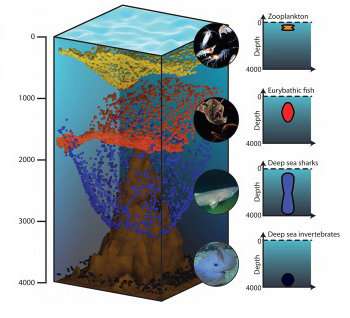Credit: University of Queensland
A new approach to tackle conservation decisions in 3-D marine environments could lead to better conservation outcomes.
3-D spatial conservation prioritisation was developed by University of Queensland Ph.D. student Ruben Venegas-Li of UQ's Biodiversity Research Group, led by Associate Professor Salit Kark.
Dr. Kark said the technique would help overcome one of the key problems with current marine conservation mapping and planning.
"Marine ecosystems are 3-D in nature, with depth playing a key role in their structuring, species distributions and ecosystem functioning," she said.
"Until now, the vast majority of efforts to prioritise what conservation actions in the marine environment has been performed in two dimensions, usually working on a grid over a 2-D map.
"This doesn't really give us much of the information we need, as protecting biodiversity at one depth might actually be compatible with other uses of the ocean at a different depth.
The idea for 3-D conservation planning arose in a workshop in Italy in 2015, one of a series initiated and co-led by Dr. Kark, which brought together marine conservation experts from around the globe.
"With increased use of ocean resources and advances in technology, people are extending fishing, mining and oil and gas activities to offshore and deep ocean areas," Dr. Kark said.
"Zoning in urban areas, for example, is becoming three dimensional, and a similar approach can be adapted in marine planning."
Mr Venegas-Li believes the method could prove beneficial, for instances in which officials need to balance competing uses of marine environments.
"The results suggest a 3-D approach might prove more efficient in terms of total cost and space protected than a traditional 2-D approach, allowing other uses at depths that are not a conservation priority," he said.
"As human intervention in the marine realm increases in both its intensity and extent, tools like 3-D planning will prove critical for effective marine conservation planning and action."
The findings have been published in Methods in Ecology and Evolution and in Conservation Letters.
More information: Rubén Venegas-Li et al. 3D spatial conservation prioritisation: Accounting for depth in marine environments, Methods in Ecology and Evolution (2017). DOI: 10.1111/2041-210X.12896
Noam Levin et al. Adding the Third Dimension to Marine Conservation, Conservation Letters (2017). DOI: 10.1111/conl.12408
Journal information: Conservation Letters , Methods in Ecology and Evolution
Provided by University of Queensland























